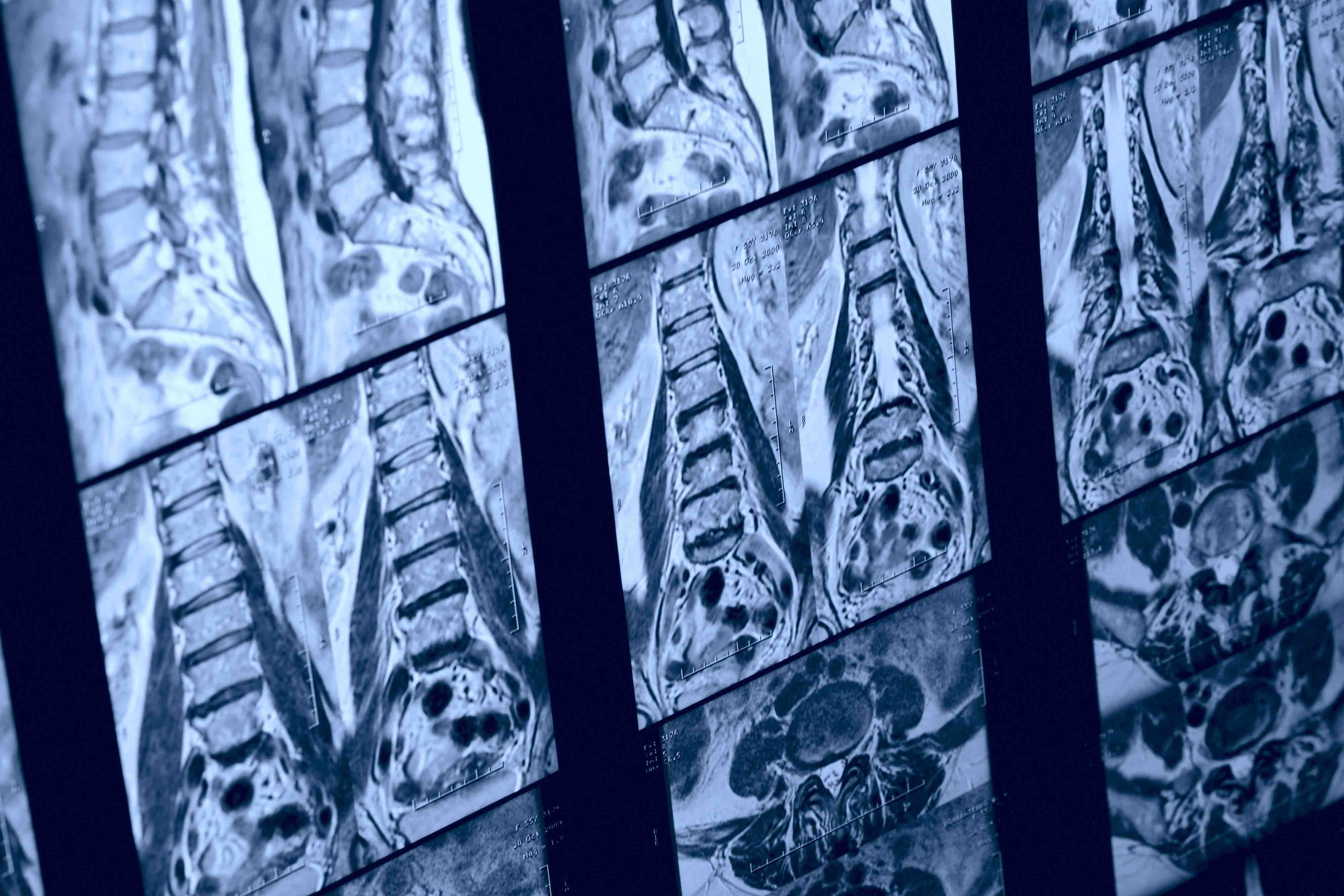News
Article
Preexisting Structural Damage, Inflammation Linked With Radiographic Progression in Patients Treated for AxSpA
Author(s):
Preexisting spinal damage and higher levels of inflammatory activity at baseline were linked with radiographic progression in axial spondyloarthritis treated with biologic disease-modifying antirheumatic drugs over 2 years regardless of treatment type.
In patients with axial spondyloarthritis undergoing treatment with interleukin (IL)-17 or tumor necrosis factor (TNF) inhibitors, preexisting structural damage and high baseline inflammatory activity were associated with radiographic progression in a study presented at the European Alliance of Associations for Rheumatology 2024 Annual European Congress of Rheumatology.1
The authors noted that prior research has identified a range of predictive factors for radiographic spinal progression in axial spondyloarthritis overall—including preexisting structural damage and inflammatory activity2—but that there is a lack of information regarding patients being treated with biologic disease-modifying antirheumatic drugs (bDMARDs).1
Preexisting spinal damage and higher levels of inflammatory activity at baseline were linked with radiographic progression in axSpA over 2 years regardless of treatment received. - Kondor83 - stock.adobe.com

“Most of these studies were conducted in patients not receiving biological disease-modifying antirheumatic drugs or were focusing on only one drug class,” the authors wrote. “Therefore, it is uncertain whether the factors associated with the progression of structural damage are the same for patients receiving bDMARDs with different modes of action.”
In a post-hoc analysis of the SURPASS study (NCT03259074) comparing radiographic progression in patients with axial spondyloarthritis treated with the IL-17 inhibitor secukizumab vs adalimumab biosimilar, a TNF inhibitor,3 authors of the new study evaluated the relationship between baseline factors and radiographic progression in radiographic axial spondyloarthritis over 2 years.
All patients in the SURPASS study with data available for baseline and week 104 radiographs and MRI scans of the spine were considered for the post-hoc analysis. Researchers evaluated radiographic spinal progression with the modified Stoke Ankylosing Spondylitis Spinal Score (mSASSS) assessed by 3 blinded readers, requiring at least 2 of the readers to agree on an mSASSS score or 3 or higher for individual vertebral corners. Three blinded readers also evaluated spinal inflammation and fat lesions in MRI scans.
A total of 288 patients were included in the analysis and had complete sets of radiographs and MRIs. Among 99 patients who received secukizumab in 150 mg doses, 95 who received secukizumab in 300 mg doses, and 94 who received the adalimumab biosimilar, radiographic progression in the form of new syndesmophytes was seen in 18.2%, 15.8%, and 14.9% of patients, respectively, at 104 weeks.
A univariable analysis showed that having syndesmophytes at baseline was linked with additional radiographic progression over 2 years (OR, 12.0; 95% CI, 3.91-36.82) across treatment groups. Higher levels of inflammatory activity at baseline—including elevated high-sensitivity C-reactive protein (OR, 4.52; 95% CI, 1.46-14.05), higher Axial Spondyloarthritis Disease Activity Score (OR, 1.73; 95% CI, 1.18-2.55), and higher spinal MRI bone marrow edema score (OR, 1.07; 95% CI, 1.04-1.11)—was also linked with radiographic progression over 2 years regardless of treatment received.
The treatment arms did not differ in the factors associate with radiographic progression, and baseline spinal structural damage (OR, 13.0; 95% CI, 3.79-44.570) and measures of inflammatory activity remained associated with syndesmophyte formation after 2 years in a multivariable analysis.
The multivariable logistic regression analysis incorporated a number of factors, including patient sex, current smoking status, syndesmophytes, elevated high-sensitivity C-reactive protein, non-steroidal anti-inflammatory drug score, total spine edema score, and fatty lesion score as baseline covariates. These variables were selected considering univariable analyses and clinical expertise.
“Pre-existing structural damage and high inflammatory activity at baseline were associated with new syndesmophyte development in r-axSpA patients irrespective of treatment with IL-17 or TNF inhibitors over 2 years,” the authors concluded.”
References
1. Poddubnyy D, Braun J, Machado P, et al. Factors associated with radiographic spinal progression in patients with axial spondyloarthritis receiving IL-17A inhibitor or TNF inhibitor therapy: a post-hoc analysis of the SURPASS study. Poster presented at: EULAR 2024 Congress; June 12-15, 2024; Vienna, Austria. Poster POS0194.
2. Poddubnyy D, Sieper J. Mechanism of New Bone Formation in Axial Spondyloarthritis. Curr Rheumatol Rep. 2017;19(9):55. doi:10.1007/s11926-017-0681-5
3. Effect of secukinumab on radiographic progression in ankylosing spondylitis as compared to GP2017 (adalimumab biosimilar) (SURPASS). ClinicalTrials.gov. Updated August 21, 2023. Accessed June 28, 2024. https://www.clinicaltrials.gov/study/NCT03259074




